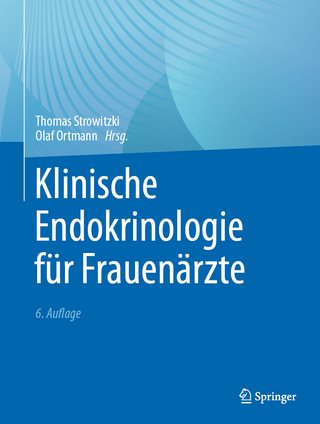
Precision Medicine in Neurodegenerative Disorders
Elsevier - Health Sciences Division (Verlag)
978-0-323-85555-6 (ISBN)
Specific chapters are dedicated to the promise and challenges of extracellular vesicles for both diagnosis and treatment, the growing application of digital measures and other evaluations of clinical response, the nuts and bolts of novel adaptive clinical trial designs, and the regulatory changes needed to facilitate drug development for disease-modification purposes.
Dr. Alberto Espay is Professor and Endowed Chair of the James J. and Joan A. Gardner Center for Parkinson’s disease at the University of Cincinnati. He has published over 300 peer-reviewed research articles and 8 books, including Common Movement Disorders Pitfalls, which received the Highly Commended BMA Medical Book Award in 2013 and Brain Fables, the Hidden History of Neurodegenerative Diseases and a Blueprint to Conquer them, coauthored with Parkinson patient and advocate Benjamin Stecher, selected by the Association of American Publishers for the PROSE Award honoring the best scholarly work in Neuroscience published in 2020. He has served as Chair of the Movement Disorders Section of the American Academy of Neurology, Associate Editor of the Movement Disorders journal, and on the Executive Committee of the Parkinson Study Group. Among other honors, he has received the Cincinnati Business Courier’s Health Care Hero award, the Spanish Society of Neurology’s Cotzias award, and honorary membership in the Mexican Academy of Neurology. He currently serves as President-Elect of the Pan-American Section of the International Parkinson and Movement Disorders Society. With colleagues at the University of Cincinnati, he launched the first biomarker study of aging (CCBPstudy.com), designed to match people with neurodegenerative disorders to available therapies from which they are most biologically suitable to benefit, regardless of their clinical diagnoses.
Part 3 Basic Science Development
1. Role of rodent models in advancing precision medicine for Parkinson disease
2. The allure and pitfalls of the prion-like aggregation in neurodegeneration
3. The shift to a proteinopenia paradigm in neurodegeneration
4. Disease mechanisms as subtypes: Lysosomal dysfunction in the endolysosomal Parkinson disease subtype
5. Disease mechanisms as subtypes: Mitochondrial and bioenergetic dysfunction
6. Disease mechanisms as subtypes: Immune dysfunction in Parkinson disease
7. Disease mechanisms as subtypes: Inflammation in Parkinson disease and related disorders
8. Disease mechanisms as subtypes: Microbiome
9. LRRK2: Genetic mechanisms vs genetic subtypes
10. Genetic mechanism vs genetic subtypes: The example of GBA
11. Subtyping monogenic disorders: Huntington disease
Part 4 Clinical Trials and Therapeutic Approaches
12. Disease-modifying vs symptomatic treatments: splitting over lumping
13. Restorative cell and gene therapies for Parkinson disease
14. The promise and challenges of extracellular vesicles in the diagnosis of neurodegenerative diseases
15. Therapeutic potential of extracellular vesicles in neurodegenerative disorders
16. Lessons from antiamyloid-β immunotherapies in Alzheimer disease
17. Lessons from immunotherapies in multiple sclerosis
18. Adaptive clinical trials and master protocols
19. Role of novel endpoints and evaluations of response in Parkinson Disease
20. Leveraging the regulatory framework to facilitate drug development in Parkinson disease
| Erscheinungsdatum | 10.07.2023 |
|---|---|
| Reihe/Serie | Handbook of Clinical Neurology |
| Verlagsort | Philadelphia |
| Sprache | englisch |
| Maße | 195 x 260 mm |
| Themenwelt | Medizinische Fachgebiete ► Innere Medizin ► Endokrinologie |
| Medizin / Pharmazie ► Medizinische Fachgebiete ► Neurologie | |
| Studium ► 1. Studienabschnitt (Vorklinik) ► Biochemie / Molekularbiologie | |
| ISBN-10 | 0-323-85555-5 / 0323855555 |
| ISBN-13 | 978-0-323-85555-6 / 9780323855556 |
| Zustand | Neuware |
| Informationen gemäß Produktsicherheitsverordnung (GPSR) | |
| Haben Sie eine Frage zum Produkt? |
aus dem Bereich


